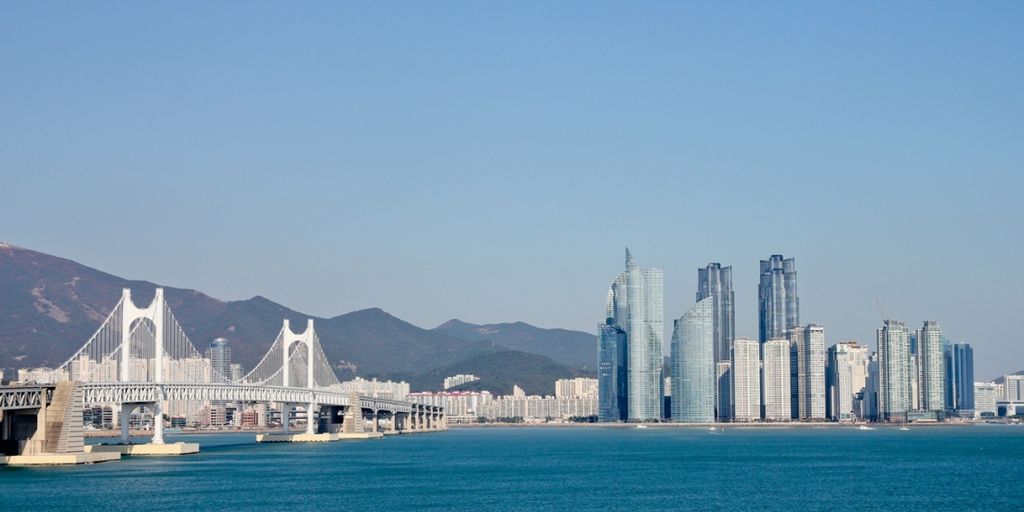Your Korean odyssey is more than a voyage through picturesque landscapes and historical sites; it’s an immersion into a culture that celebrates its past while eagerly embracing the future. In this land of the morning calm, every experience is an opportunity to connect deeply with the country’s soul, leaving you with lasting memories and a profound appreciation for the enduring spirit of Korea. This guide to exploring South Korea, from its luminous cities to its tranquil natural wonders, is designed to inspire and inform your travels. As you embark on this journey, remember that every alleyway, every mountain path, and every serene beach holds a story waiting to be discovered. South Korea invites you to become part of its ongoing story, one that is as dynamic and vibrant as the landscape itself.
Key Takeaways
- South Korea offers a blend of ancient traditions and modern innovations, making it a unique travel destination.
- Each region, from bustling Seoul to serene Jeju Island, offers its own distinct cultural and natural attractions.
- Exploring traditional markets and sampling street food is a must-do to experience the local flavors and culture.
- South Korea’s festivals and celebrations provide a deep insight into its rich cultural heritage and communal spirit.
- Whether you’re hiking in the mountains or relaxing on the beaches, South Korea’s diverse landscapes offer something for every traveler.
Exploring Seoul: The Heartbeat of South Korea
Seoul, the heart of South Korea, stands as a testament to the country’s remarkable journey from historical depths to skyscraping heights. Discover South Korea’s hidden gems as you navigate through this vibrant city, where ancient traditions seamlessly blend with futuristic innovation.
Jeju Island: Nature’s Paradise
Jeju Island, a volcanic island off the southern coast of Korea, is a paradise of natural beauty and tranquility. It’s home to the majestic Hallasan Mountain, South Korea’s highest peak, which offers challenging hikes and breathtaking views from its summit. Surrounding this natural monument, the island is dotted with picturesque waterfalls like Cheonjiyeon Falls and Jeongbang Falls, each cascading into the ocean and inviting visitors to appreciate the island’s volcanic origins.
Volcanic Landscapes and Waterfalls
Jeju Island’s unique geological features make it a haven for nature enthusiasts. The island’s volcanic origins are evident in its rugged landscapes and stunning waterfalls. Cheonjiyeon Falls and Jeongbang Falls are must-visit spots, where you can witness the power and beauty of nature up close.
Beaches and Coastal Trails
The island’s pristine coastlines offer a perfect escape for those looking to relax or explore. Jeju’s beaches are known for their clear waters and soft sands, making them ideal for swimming and sunbathing. Coastal trails provide breathtaking views of the ocean and are perfect for leisurely walks or more challenging hikes.
Cultural Villages and Museums
Jeju Island is not just about natural beauty; it also offers rich cultural experiences. The island is home to several cultural villages and museums that showcase the unique heritage and traditions of the region. Visitors can explore traditional Korean houses, learn about local customs, and even participate in cultural activities.
As we transition from the urban allure of Seoul, our journey takes us to the natural wonders of Jeju Island, promising a stark contrast to the metropolitan vibrance and introducing us to South Korea’s serene and untouched landscapes.
Gyeongju: A Journey Through Time
As we leave the coastal vibrancy of Busan, our journey takes us back in time to Gyeongju, a city that encapsulates the soul of ancient Korea. Here, amidst the remnants of the Silla Dynasty, we find a tranquil homage to Korea’s historical grandeur, setting the stage for a deeper exploration of the nation’s heritage.
Gyeongju’s rich tapestry of history and culture provides a poignant reminder of Korea’s past, serving as a gateway to understanding the country’s deep-rooted traditions and the continuity of its heritage. Gyeongju, once the capital of the Silla Dynasty, is often referred to as "the museum without walls" due to its extensive array of historical sites and relics.
Busan: The Coastal Gem
Busan, South Korea’s second-largest city, contrasts the serene landscapes of Jeju and the bustling streets of Seoul. Framed by mountains, beaches, and a dynamic urban landscape, Busan is a city of diverse attractions.
The Tranquility of the Korean Countryside
Your Korean odyssey is more than a voyage through picturesque landscapes and historical sites; it’s an immersion into a culture that celebrates its past while eagerly embracing the future. In this land of the morning calm, every experience is an opportunity to connect deeply with the country’s soul, leaving you with lasting memories and a profound appreciation for the enduring spirit of Korea.
Tea Plantations and Bamboo Forests
Experience that much-needed tranquility amidst swaying bamboo trees on your trip to South Korea. Located in Jeollanamdo, the popular countryside destination offers lush tea plantations where you can enjoy a peaceful stroll and even sample some fresh tea.
Mountain Hiking Trails
Today’s 101 km ride took us through central Korea’s agricultural heartland. We cycled past picturesque apple orchards, lush rice paddies, and charming villages. The peaceful countryside was a stark contrast to the bustling cities we had seen, and the slower pace allowed us to truly appreciate the rural beauty.
Serene Temples and Retreats
Navigate through the vibrant markets, serene temples, and lush landscapes, you’ll find that the true essence of South Korea lies in the warmth of its people and the richness of its stories. Every serene temple and retreat offers a unique opportunity to reflect and find inner peace.
Festivals and Celebrations: The Soul of Korea
As we explore the array of festivals that dot the Korean landscape, we’re reminded of the country’s ability to weave together the past and present into a rich tapestry of cultural expression. These celebrations not only mark the changing seasons but also the enduring stories and traditions that shape the Korean identity. They offer a unique window into the soul of the country, where ancient rituals and contemporary life converge in colorful displays of unity and joy.
Traditional Festivals and Ceremonies
South Korea’s calendar is punctuated by festivals that celebrate the country’s seasons, history, and culture, offering visitors a vibrant insight into the communal spirit and traditions of the Korean people. Among these, the Jinju Lantern Festival illuminates the night with thousands of paper lanterns floating on the Namgang River, creating a mesmerizing spectacle that honors the 1592 Jinju Fortress battle during the Imjin War.
Modern Music and Art Festivals
Modern festivals in Korea are just as exciting, featuring contemporary music and art. These events often attract international artists and visitors, making them a global celebration of creativity and talent.
Seasonal Celebrations and Events
Korean festivals are a celebration of seasons and stories. Each season brings its own unique festivals, from spring’s cherry blossom festivals to winter’s ice fishing events. These celebrations highlight the beauty of Korea’s natural landscapes and the joy of communal activities.
As you prepare to craft your Korean odyssey, remember that the beauty of South Korea lies not only in its landscapes and monuments but in its people and their stories. Each city, each festival, and each tradition invites you to partake in a story much larger than yourself, offering insights into a culture that is both ancient and ever-evolving.
Culinary Adventures Across Korea
Street Food Delights
Exploring the street food in South Korea is an adventure across South Korea. From bustling markets to quiet alleys, you’ll find a variety of delicious treats. Some popular street foods include tteokbokki (spicy rice cakes), hotteok (sweet pancakes), and odeng (fish cakes). Each bite offers a taste of Korea’s rich culinary heritage.
Traditional Korean Cuisine
Traditional Korean cuisine is a blend of flavors and textures that reflect the country’s history and culture. Dishes like kimchi, bibimbap, and bulgogi are staples in Korean households. These meals are often accompanied by a variety of banchan (side dishes), which add to the overall dining experience. The anticipation was palpable as we mingled with fellow travelers, sharing our excitement for the journey ahead.
Modern Fusion Restaurants
In recent years, South Korea has seen a rise in modern fusion restaurants that combine traditional Korean ingredients with international flavors. These eateries offer a unique dining experience that showcases the creativity and innovation of Korean chefs. Whether it’s a Korean-Mexican taco or a kimchi pizza, these dishes are sure to delight your taste buds.
Your Korean odyssey is more than a voyage through picturesque landscapes and historical sites; it’s an immersion into a culture that celebrates its past while eagerly embracing the future.
Conclusion: Crafting Your Own Korean Odyssey
Your Korean odyssey is more than a voyage through picturesque landscapes and historical sites; it’s an immersion into a culture that celebrates its past while eagerly embracing the future. In this land of the morning calm, every experience is an opportunity to connect deeply with the country’s soul, leaving you with lasting memories and a profound appreciation for the enduring spirit of Korea. This guide to exploring South Korea, from its luminous cities to its tranquil natural wonders, is designed to inspire and inform your travels. As you embark on this journey, remember that every alleyway, every mountain path, and every serene beach holds a story waiting to be discovered. South Korea invites you to become part of its ongoing story, one that is as dynamic and vibrant as the landscape itself. Whether you’re marveling at the architectural feats of ancient dynasties or joining in the communal joy of a festival, South Korea promises a journey of discovery and connection, enriching your perspective of the world.
Frequently Asked Questions
What is the best time to visit South Korea?
The best time to visit South Korea is during spring (April to June) and autumn (September to November) when the weather is mild and the landscapes are stunning.
Do I need a visa to travel to South Korea?
Visa requirements for South Korea vary depending on your nationality. Many countries have visa-free entry for short stays, but it’s best to check with the South Korean embassy or consulate in your country.
What are some must-try Korean dishes?
Some must-try Korean dishes include Kimchi, Bibimbap, Bulgogi, Tteokbokki, and Korean BBQ. Street food like Hotteok and Gimbap are also popular among tourists.
Is South Korea a safe country for tourists?
Yes, South Korea is considered one of the safest countries for tourists. The crime rate is low, and the public transportation system is reliable and efficient.
What are the top attractions in Seoul?
Top attractions in Seoul include Gyeongbokgung Palace, N Seoul Tower, Bukchon Hanok Village, Myeongdong Shopping Street, and the Dongdaemun Design Plaza.
How can I travel between cities in South Korea?
Traveling between cities in South Korea is convenient with options like high-speed trains (KTX), express buses, and domestic flights. The public transportation network is extensive and well-connected.

